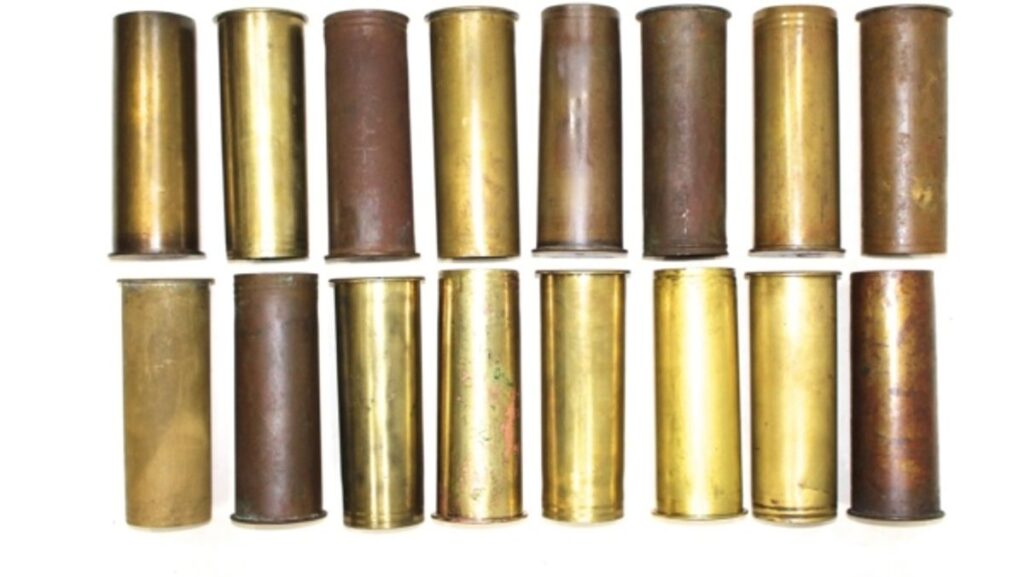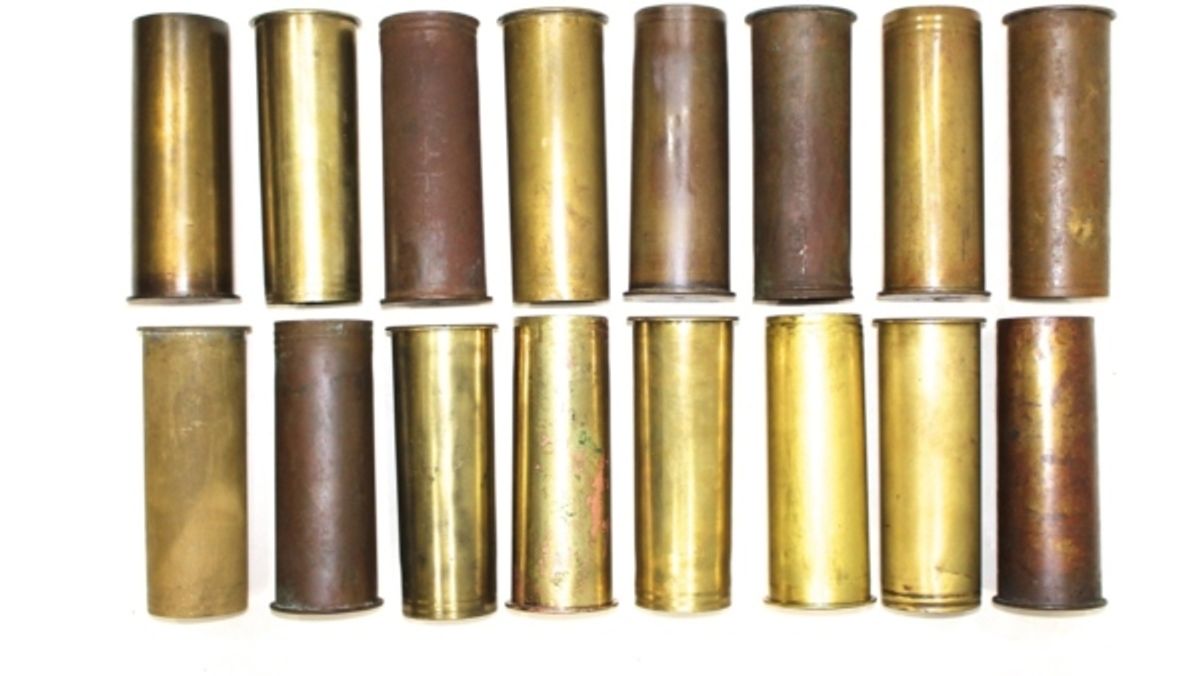
How Do You Recognize an Ammunition Item is Inert? A Detailed Guide
Determining whether an ammunition item is inert is crucial for safety and responsible handling. Mishandling live ammunition can lead to severe consequences, while improper disposal of potentially hazardous materials poses environmental risks. This comprehensive guide provides in-depth knowledge and practical techniques to confidently identify inert ammunition, ensuring your safety and the safety of those around you. We’ll explore visual cues, testing methods, and expert insights to equip you with the skills necessary for safe ammunition management.
Understanding the Basics of Ammunition and Inert Ordnance
Before diving into identification techniques, it’s essential to understand what constitutes ammunition and what makes it potentially dangerous. Ammunition, in its simplest form, is a complete cartridge or shell containing all the components needed to fire a projectile from a firearm. These components typically include a projectile (bullet, slug, or shot), a propellant (gunpowder), a primer, and a cartridge case. The primer ignites the propellant, which generates expanding gases that propel the projectile.
Inert ammunition, on the other hand, is ammunition that has been rendered incapable of firing. This can be achieved through various methods, such as removing the primer and propellant, drilling a hole in the cartridge case, or filling the cartridge with an inert material. However, it’s vital to remember that visual inspection alone is not always sufficient to determine if ammunition is truly inert. Some items may appear inert but still contain residual propellant or a live primer, posing a significant risk.
Visual Indicators of Inert Ammunition
While visual inspection shouldn’t be the only method used, it’s a good starting point. Look for the following indicators:
- Drilled Holes: A common method for rendering ammunition inert is to drill a hole in the cartridge case. This prevents pressure from building up if the primer is struck.
- Missing Primer: The primer is a small, impact-sensitive component located at the base of the cartridge. If the primer is missing or visibly damaged, the ammunition is likely inert.
- Deformed Cartridge Case: A severely dented, crushed, or otherwise deformed cartridge case can indicate that the ammunition is inert, although this isn’t always the case.
- Filled Cartridge Case: Some inert ammunition is filled with a solid material, such as epoxy or plaster, to prevent it from being reloaded or fired.
- Markings: Some inert ammunition is marked with specific colors or symbols to indicate its status. However, these markings are not standardized, so their absence doesn’t necessarily mean the ammunition is live.
Safe Handling Practices for Potentially Inert Ammunition
Even if ammunition appears to be inert, it’s crucial to handle it with extreme caution. Always follow these safety guidelines:
- Treat Every Round as Live: Until you can definitively prove otherwise, treat every round of ammunition as if it were live and capable of firing.
- Wear Safety Glasses and Gloves: Protect your eyes and hands from potential hazards, such as sharp edges or chemical residue.
- Work in a Well-Ventilated Area: If you’re handling ammunition that may contain propellant, work in a well-ventilated area to avoid inhaling fumes.
- Avoid Open Flames or Sparks: Never expose ammunition to open flames or sparks, as this could ignite the propellant.
- Don’t Disassemble Live Rounds: Disassembling live ammunition is extremely dangerous and should only be performed by qualified professionals.
Advanced Testing Methods for Verifying Inert Status
While visual inspection can provide clues, more advanced testing methods are often necessary to confirm that ammunition is truly inert. These methods should only be performed by individuals with the proper training and equipment.
- Primer Testing: A qualified gunsmith or armorer can safely test the primer to see if it’s still live. This typically involves using a specialized tool to strike the primer and observe whether it detonates.
- Propellant Inspection: If the cartridge case is accessible, a small sample of the propellant can be carefully removed and tested for flammability. This should be done in a controlled environment with appropriate safety precautions.
- X-Ray Imaging: X-ray imaging can be used to examine the internal components of the ammunition without disassembling it. This can help to determine if the propellant is present and if the primer is intact.
Understanding Ammunition Components in Detail
Ammunition is a complex assembly of several critical components, each playing a vital role in the firing process. Understanding these components is key to identifying potential issues and assessing whether a round is truly inert.
- The Projectile: This is the bullet, slug, or shot that is expelled from the firearm. Its shape, weight, and composition are designed for specific purposes.
- The Cartridge Case: This is the container that holds all the other components together. It’s typically made of brass, steel, or aluminum.
- The Propellant: This is the explosive substance that generates the gas pressure to propel the projectile. It’s commonly referred to as gunpowder, although modern propellants are often more complex chemical compounds.
- The Primer: This is a small, impact-sensitive component that initiates the firing sequence. When struck by the firing pin, the primer detonates, igniting the propellant.
The Role of a Gunsmith or Armorer
When in doubt, always consult a qualified gunsmith or armorer. These professionals have the training, experience, and equipment necessary to safely handle and inspect ammunition. They can perform advanced testing methods and provide expert advice on proper disposal procedures. Attempting to render ammunition inert without proper training can be extremely dangerous and should be avoided.
Legal Considerations and Responsible Disposal
Disposing of ammunition is subject to various federal, state, and local regulations. It’s crucial to be aware of these regulations and to follow proper disposal procedures. Never attempt to dispose of ammunition by burying it, burning it, or throwing it in the trash. Contact your local law enforcement agency or a qualified gunsmith for guidance on safe and legal disposal options.
In many jurisdictions, you can turn in unwanted ammunition to the police for safe disposal. Some gun ranges and shooting clubs also offer ammunition disposal services. Additionally, some companies specialize in the safe and environmentally responsible disposal of ammunition and other hazardous materials.
Inert Ammunition in Military Training: A Case Study
The military extensively uses inert ammunition for training purposes. This allows soldiers to practice loading, unloading, and handling weapons without the risk of accidental discharge. Inert training rounds are typically brightly colored (often blue or orange) and clearly marked to distinguish them from live ammunition. These rounds are designed to be dimensionally identical to live rounds, allowing for realistic training scenarios.
Understanding the Different Types of Inert Ammunition
Inert ammunition comes in various forms, each designed for a specific purpose. Some common types include:
- Dummy Rounds: These are inert rounds that are used for training purposes. They are typically made of plastic or metal and are designed to resemble live ammunition in size and shape.
- Snap Caps: These are inert rounds that are designed to protect the firing mechanism of a firearm during dry firing (firing without live ammunition). They typically contain a spring-loaded plunger that absorbs the impact of the firing pin.
- Drill Rounds: These are inert rounds that are used for practicing loading and unloading firearms. They are typically brightly colored and may have grooves or other markings to distinguish them from live ammunition.
The Importance of Proper Storage for Ammunition
Proper storage is crucial for maintaining the integrity and safety of ammunition. Ammunition should be stored in a cool, dry place away from direct sunlight and extreme temperatures. It should also be stored in a secure container that is inaccessible to children and unauthorized individuals. Avoid storing ammunition in damp or humid environments, as this can cause corrosion and degradation of the propellant.
Real-World Scenarios: Identifying Inert Ammunition in Practice
Let’s consider a few real-world scenarios to illustrate how to identify inert ammunition in practice:
Scenario 1: You find a box of old ammunition in your grandfather’s attic. The cartridges are tarnished and some of the bullets are loose. Upon closer inspection, you notice that several of the cartridges have small holes drilled in the side. This is a strong indication that the ammunition is inert.
Scenario 2: You’re at a gun range and you find a cartridge case on the ground. The primer is missing and the case is slightly deformed. This is likely an inert cartridge case that was ejected after the round was fired.
Scenario 3: You purchase a collection of antique firearms at an estate sale. The collection includes several boxes of ammunition. Before handling the ammunition, you consult with a qualified gunsmith who inspects the ammunition and determines that it is live and potentially unstable due to its age.
The Future of Ammunition Safety and Identification
Advancements in technology are constantly improving ammunition safety and identification methods. New types of inert ammunition are being developed that are even more realistic and safer to handle. Additionally, advanced imaging techniques and sensors are being developed to quickly and accurately identify live and inert ammunition.
Safe Ammunition Handling: A Shared Responsibility
Identifying inert ammunition is a critical skill for anyone who handles firearms or ammunition. By following the guidelines outlined in this guide, you can significantly reduce the risk of accidents and ensure the safe handling of ammunition. Remember, safety is paramount, and when in doubt, always consult a qualified professional. Share your knowledge and experiences with others to promote a culture of safety and responsibility within the shooting community.

